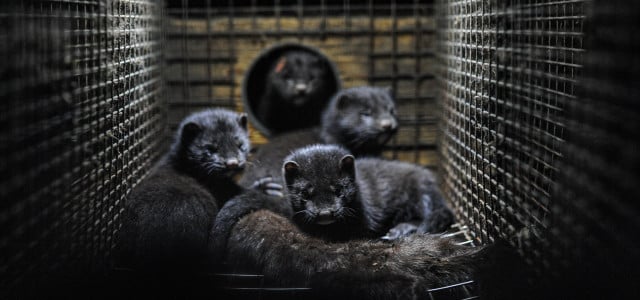
Because of bird flu, Finland is cracking down on fur farms and killing tens of thousands of animals. The outbreaks there could favor certain adaptations of the virus. Seagulls are a possible source of infection.
To limit the spread of bird flu on fur farms, tens of thousands of fur animals are being killed in Finland. According to experts, direct transmission between animals and not just one from birds cannot be ruled out.
The Finnish Food Safety Authority ordered that all mink on farms where bird flu infections have been found must be culled.
Mink are particularly problematic with regard to such infections, the authority said. The animals’ upper airways contained receptors that could bind to both avian and human flu viruses. This makes them vulnerable to both infections. Mink could therefore be more effective intermediate hosts for avian influenza than other mammals, allowing the virus to mutate more easily into a form that could infect humans. In order to prevent such virus variants, it is important to kill all mink on affected fur farms, the authority emphasized. The killing of foxes and raccoon dogs on farms will continue to be decided on a case-by-case basis.
70,000 animals are killed
According to the authorities, corresponding orders for the culling of mink have so far been issued for three fur farms. Finnish radio spoke on Tuesday evening of an estimated 70,000 fur animals that would have to be killed, including 30,000 mink and 40,000 foxes. These numbers are likely to increase. The Food Safety Authority expected culling orders on more fur farms later in the week. Pet owners could apply for state compensation.
According to the Friedrich Loeffler Institute (FLI) near Greifswald, the viruses found show mutations that indicate adaptation to mammals. In addition, the virus sequences known to date indicate that the viruses are closely related to one another. It is unclear whether the virus was transmitted from mink to mink in the farms. It cannot be ruled out. Further analyzes should provide information on this.
What is the source of infection?
Contact with seagulls seems likely as a source of infection. The virus detected is the virus type that is currently dominant in seagulls in Europe. It is still unclear whether such contact occurred several times or only once or a few times and then spread further in the farms. Further research could also shed light on this.
The Finnish health authority THL wrote that the bird flu virus has led to an exceptionally large mass death of wild birds in Finland this summer. For the first time, the virus spread to fur farms in the country and caused many illnesses and deaths among animals. The situation is primarily a problem for animal health, but developments are being closely monitored.
“Avoidable and unnecessary tragedy”
Animal rights activists criticized the mass killings and fur farming in general. The Four Paws organization spoke of an “avoidable and unnecessary tragedy” on Wednesday. She called for a total end to the fur industry across the EU.
With regard to an outbreak of bird flu on a Spanish mink farm last year, experts from the FLI considered it very likely that the virus had been transmitted directly between mink, said a spokeswoman for the Federal Institute.
Read more on Techzle\.com:
- Virus subtype H5N1: Cats infected with bird flu in Poland
- WHO: Cats infected with bird flu are pandemic warning
- Avian flu: fear of spreading to humans